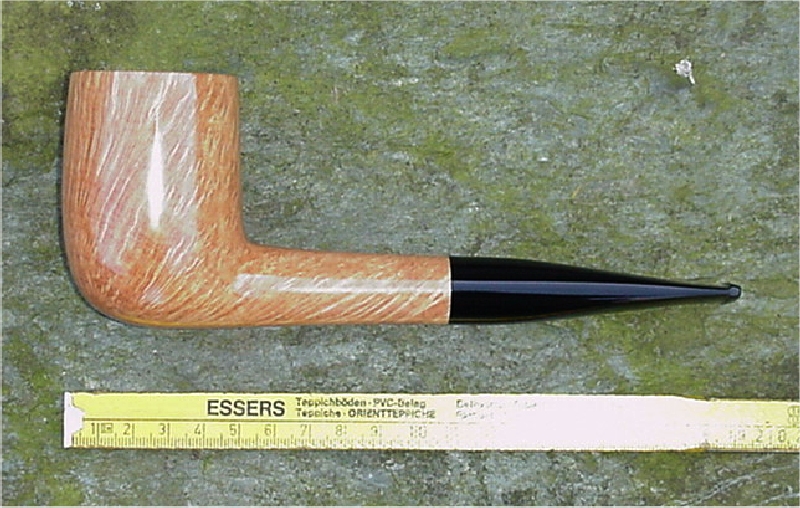bvartist wrote:KurtHuhn wrote:Also, you may try staining the pipe *before* sanding to 800 grit. At 800 grit, the pores of the wood are mostly too small to accept the stain, and a lot of the stain will sit on the surface just waiting to be given a small amount of moisture in order to release itself from the wood. I typically apply the last coat of stain at 360, and then sand with 500.
Curious! Care to elaborate? I tried this technique today, or similar. I stained after 400 grit, sanded with 600 grit, and took off every bit of stain except in the grain. Stained again and sanded with 800 grit, same thing!

My normal procedure:
- fine tune the shape of the stummel with 220 grit
- apply first coat of stain and let it soak in and completely dry
- sand with 360
- apply another coat of stain and let it completely dry
- sand with 500
- apply top coat of stain
- do final sanding (ancient chinese secret)
- finish the pipe
Applying stain early in the process allows it to really soak into the wood and get inside all the areas that it can't penetrate when you've sanded it as high as 800 grit. This provides some very striking grain contrast.
Also, at lower grits, there is far more surface area, and more opportunity for stain to get into the wood that simply isn't there once you've sanded off all the ridges and bumps and made the pipe perfectly smooth. The sanding process removes all those surface imperfections where the pores of the wood are. Also, sanding at high grit compacts the surface of the wood, closing up pores that are there to begin with. The stain just can't soak in as readily.
You can demonstrate this to yourself if you stain a piece of wood after 200 grit sanding and after 800 grit. The wood stained after 200 grit can even be sanded again with 200 grit and still retain a lot of grain contrast and color. Not so much with the one sanded to 800.
I'll have to revisit using shellac again. I did a lot of experimenting with it last year but never achieved good results. The stummel always had places where the shellac would soak in to the briar and places that would be shiny. When waxing, I'd get ridges where the shiny spots were. Could never get what I felt was a good even coat without using full strength and practially soaking the stummel in it. Guess its back to the drawing board.
Shellac on a pipe cannot be treated as if you were finishing a piece of furniture. The coating is almost non-existent. You need to cut your shellac way down, I forget the actual ratio that Todd Johnson mentioned, but I just make it about 1/3 strength using garnet shellac flakes I get at woodcraft (I like the warmth of the garnet color). It should be very thin. Then:
- using a pipe cleaner, soak your final coat of stain into the pipe, don't be afaid to use a decent amount
- let it dry
- using another pipe cleaner apply a liberal amount of shellac to the pipe
- *immediately* wipe it off with a lint-free rag The entire process from application to wiping off should take about 10 seconds.
- this will remove some of the final coat of stain - this is okay, that's why you slap on a whole bunch of that final coat.
- Buff and wax as normal
Note that you are not trying to get a hard coating of shellac. The shellac is simply a "spit coat" used to set the stain. The shellac, used like this, won't even make the pipe shiny - that's the job of buffing compounds and carnuba. And, it doesn't "seal the wood an not allow it to breathe" as some folks like to claim - it's not like you've applied a thick coat of spar finish or something.
The benfits are that your pipes will stay shinier longer, the stain will be set, and the contrast provided by setting the stain prior to buffing is far superior to what you'll get without.
And now, I await the inevitable flames.


